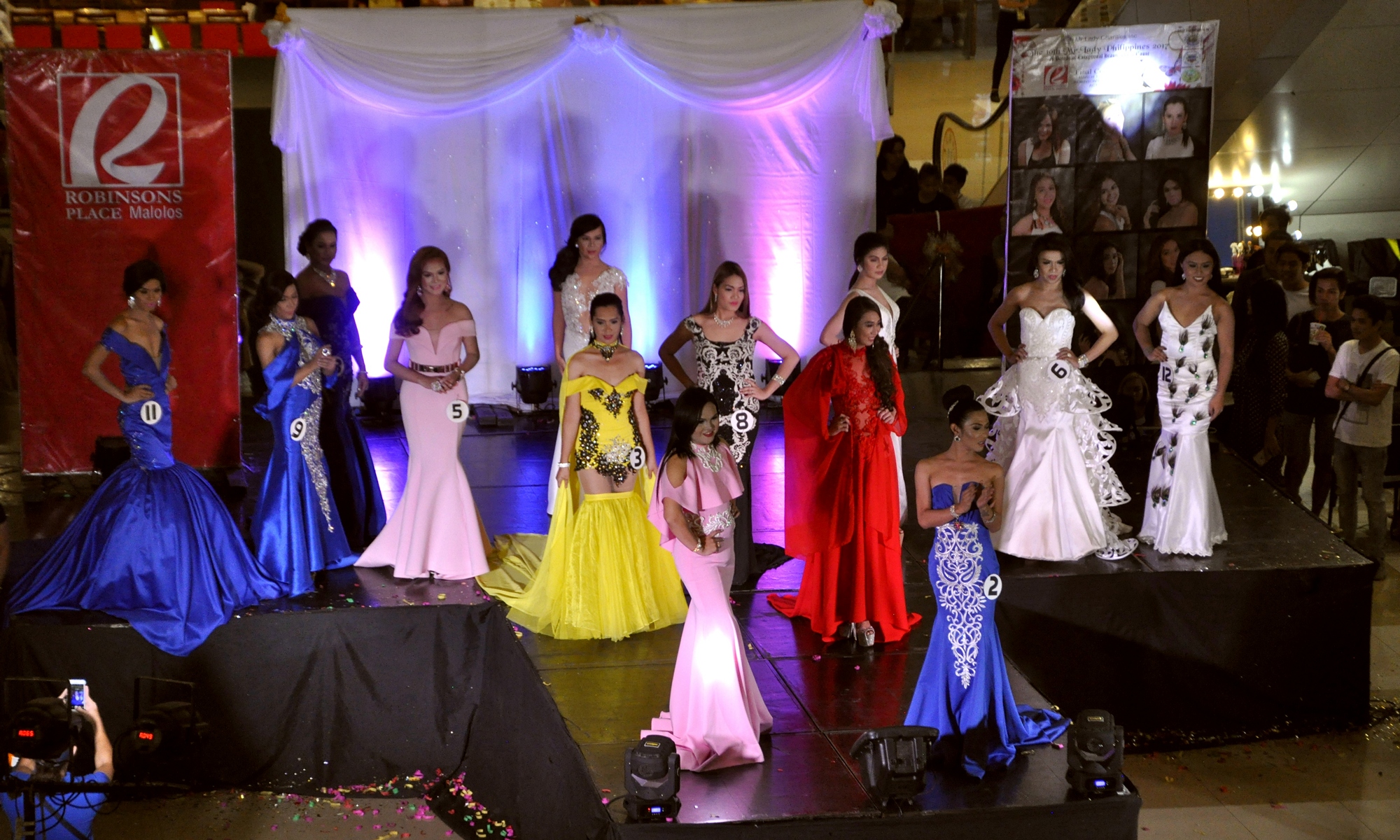Originally posted 2016-09-09 13:34:56.
Western feminists, for over half a century, have argued that gender itself has been the fundamental agent of women’s oppression. The solution often claimed, is to establish a matriarchy. But very few understand what a matriarchy really is.
Where society was based on forms of meritocracy — often on the power to make financial profit — artificial barriers that might exist in less fluid societies could be broken down by women excelling and so they could rise in the culture.
Two Groups
For thousands of years and probably since the evolution of our species, humans lived in societies that were divided into two groups. These are the ‘Men’ or ‘Away’ group who were nominally the hunters but more importantly the protectors, and the ‘Not-Men’ or ‘Home’ group, made up of women, children, elderly men and those males who either did not wish to or were not allowed to join the ‘Away’ group.
This behaviour is innate and is seen in many other species. In lions, for example, females take care of the young and do most of the hunting, restricting themselves to a fairly small geographical area (though they may migrate in pursuit of game) while males are semi-detached, wandering over a range of many square miles.
So the division of society on sex-based lines is not unique to humans. In fact it is a widespread rule. The principal difference in humans, from lions, for example, is that the males are not solitary. They form a group, the Away group.
Settlement
Human settlement was a function of women’s desire for stability and security; a safe, permanent home. Within that home space, they established the rules of the Home group. This was certainly applicant at Catal Hoyuk, for example and explains why no masculine artefacts have been found at the site: the settlement itself was under the control of women.
This model, of the ‘two-group’ society, is the evolved way for humans to live; yet in the West we have set out on an experiment to destroy this.
This has come about because, since the beginning of the 20th century, women in the West have desired to colonise the ‘Away’ group. They have been conditioned to believe that bearing, raising and protecting children is a form of slavery. This derives directly from the ideas of Karl Marx and his fellow-travellers, who identified that the society they wished to destroy — which is all human society — was based on the nuclear family. These nuclei are linked together, in non-urban societies, by grandmothers to form clans.
Moving outside the Home space meant that women had to interact directly with men and indeed, to compete with them. But women do not compete well; they are cooperative by nature. So operating in the Away group was difficult for them. It had been evolved by men, to suit men; and the only way that women could succeed in it was to become like men.
How much ‘woman’ is left?
When we look at Hilary Clinton, Margaret Thatcher or Angela Merkel, we must ask, how much ‘woman’ is left? At least in terms of their public personas, none.
The ‘patriarchy’ is just the society of men; and men are reluctant to see the rules changed to accommodate women. This is reasonable since women refuse point black to allow the rules that govern their spaces to be changed to accommodate men. A classic example of this is in the ‘trans bathroom’ debate. Transwomen are actually male, but seek the privilege (as they see it) of using women’s reserved spaces. Women are increasingly fighting back against this. But they should remember that if women have the right to define spaces exclusive to females, then so do men.
If they move into the Away, space, women are required to behave as men do, in order to rise in its hierarchy. This is because it is not a female space. Alternatively, they can enter the male space and change to accommodate women. But this necessarily means disadvantaging men.
‘Women-become-men’.
 The requirement on women to ‘become men’ in order to succeed in competition with men leads inevitably to a compromise of gender.
The requirement on women to ‘become men’ in order to succeed in competition with men leads inevitably to a compromise of gender.
This means that effectively, women who do rise in the Away group must themselves be transgender. They may not be transsexual — that is, they have not modified their bodies to be more manly — but they have become transgender by adopting gender behaviours and roles normally specific to men. In short they are ‘women-become-men’.
Amongst many feminists today there remains an unfortunate and erroneous conviction that ‘gender is a social construct designed by men to oppress women’ and that the only way for women to advance to the status of men would therefore be to erase gender itself.
Many expressions of gender are invented. For example, 300 years ago, men wore long wigs, colourful brocades, velvet pantaloons, frilly lace collars and cuffs, stockings, high-heels and full make-up, and considered themselves very manly indeed. These conventions are fluid and change all the time.
On the other hand, there is practically no traditional culture, even amongst those where people habitually go naked or nearly so — that did not display differences of gender; and these were all very similar. So while gender expression clearly is somewhat conventional, gender itself is innate, or at least, universal.
This is easily proven by looking at human dimorphism. No other primate has breasts, yet they suckle their young successfully. This is general across the Mammalia. Why do human females develop them? It is to identify them as targets, to potential mates — males. The breast is mainly made of fat; it is effectively decorative. The same is true of women’s hips and buttocks. Conversely, why to men had deep voices and hairy bodies? Again, these are sexual attractors. They are ‘Secondary Sexual Characteristics, or better, gender.
That makes the idea of ‘getting rid of gender’ seem much like Marx’s idea that the State might ‘wither away’ in Communism — which we have adequate evidence to show, gained at the cost of huge suffering, is not true. So it seems likely to also be the case with gender. You may hate it or love it, but it does not appear that you can do away with it.
Gender is real
If patriarchy is just the society of men and if gender is real and cannot be done away with, then we have to ask ‘with what do we replace the patriarchy?’
The only possible answer is ‘a matriarchy.’
Well, what is the matriarchy? It is the patriarchy inverted; it is the society of women. The position we are now at is that we are being asked to replace a two-group, balanced society with an unbalanced one, a matriarchy. But, unlike at any time in the past, this is a matriarchy in name only, since it is not based on positive values like the raising and nurture of children, but on individual greed. It is actually a Gynocracy, a state in which women rule by force.
This has never been shown to have been successful, ever, in human history. All successful matriarchies have existed in the context of a two-group social model and were focussed on the family. What we are now being asked to do is to remove all male society and replace it with female. In other words, all men must become women.
Many fine things have happened because of men: science, art, and so on. All the glory of Rome, the richness of the renaissance, the intellectual jewel of the Enlightenment, the powerhouse of the Industrial Revolution — these are all the results of men’s efforts.
Matriarchy in the Philippines.
Matriarchy in the Philippines, as a model, exists across southeast Asia, with only small cultural variations. All of the societies there, whatever their more recent religious overlays, have their roots in animistic cultures, which remain extant in local tribal cultures within them.
Although these cultures are famously ‘macho’ they are in fact matriarchies. The societies are divided into an external group of men and an internal hierarchy of ‘not-men’ based around women.
We can clearly see this at work in older hunter-gatherer societies too. Men hunt large game and carry our heavier tasks, to which they are suited physically, while women forage, trap small game and look after the children.
The traditional model.
Matriarchy in the Philippines conforms to the model evolved over many thousands of years, from tribal, to village-settled mixed hunter/horticultural/agrarian. This culture was based on small villages. With increasing population and urbanisation, these villages became subsumed into larger towns and cities, but retained their character. These became the barangays or ‘villages’ — as they are still often called — of the modern Philippines.
Within this culture, the old social split still prevails: in the streets, a powerfully ‘macho’ masculine society exists: within the home a matriarchy is in place. Men rarely socialise in the home, nearly always in the street, because within the home is a ‘not-men’ space. It is centred on the hierarchy of women.
Within traditional Filipino culture, the head of the household is the grandmother, Lola. Crucially, she looks after the family finances. If there is a business, she looks after the accounts, while the men do the work, the trading, the bartering and the deals. But when it comes to taking or paying money, the women, headed by Lola, are responsible. Usually her oldest daughter will learn how to take over.
You can see this anywhere that women have a presence. Filipino markets — called ‘palenke‘ or ‘wet markets’ — are women’s spaces. Women run nearly all the stalls. In certain areas, such as butcher’s stands, there might be men hacking up the meat. They may even serve the public — but when the customer pays, the man hands the money to the senior woman, and she returns the change.
Colonise and control.
In fact, women colonise any space where they are significantly represented — not necessarily in a majority. They turn it, de facto, into a women’s space. Women don’t allow men to be ‘bad boys’ in it. No farting, cursing, or brawling. No dirty jokes, no sexual innuendo. You behave. Mama is watching.
This extends to politics: since the fall of the dictator Marcos in 1986, the Philippines has had two women Presidents. These were Corazon Aquino (1986-1992) and Gloria Macapagal (2001-2010) . This means that, at time of writing, women had governed the Philippines for exactly half the time since Marcos fell.
It is true that powerful political clans backed these women. But they did not get to be President by abandoning their gender. They did not do it by being ‘better at being men than men are’. Instead, they did it by being the matriarchs who ruled over their clans. They did it by being what they were — ‘Lolas’. They didn’t ‘erase gender’. These women used the gender-based system of external patriarchy/internal matriarchy to access supreme power. They used gender as a political tool.
And while these women were Presidents, they are no exceptions to the rule: powerful women are everywhere in Filipino life, in the legislature, the judiciary, academia and business.
Macho
Filipino macho culture is tough, vain, bombastic, foul-mouthed, cheeky and hot-headed. Men are brawlers and larger-than-life.
I often wondered why so many women go for ‘bad boys’: it’s because in taming the bad boy, they show their prowess, not just as women, but over men. ‘See, he may be the toughest guy in town, but when I whistle, he comes. And you’d better watch it if I do.’
An alternative illustration of the consequences of matriarchy.
Gender in the Philippines does not, in any way, work against women: it works for them.
Once again, the Phils, that magical, contradictory, confused and confusing, riotous place, provides an alternative example that we should look to carefully. And while I am focussing on the Phils, it’s not unique. Across south-east Asia we see the same, to a greater or lesser degree. Even in the West, for example amongst Irish Travellers, it persists.
I am not suggesting that we should try to replicate the south-east Asian model in the West. Indeed I am not even suggesting that it would be a good thing. I am saying that before we condemn gender in the name of equality, we should recognise a simple rule: you can’t buck evolution.
Gender is not the problem. Trying to deny it exists is.





So is Philippines matriarchal or patriarchal?
It’s a matriarchy in the sense that anthropologist Peggy Reeves Sanday defines it. While Christianity has made inroads into this, certainly in the provinces it still very much is.
The social influence is masculine. Therefore, Philippines is patriarchal. Virginity is still valued in the Philippines. Virginity is a paternal law of men to prove that men own women like broken of hymen and bleeding. The social influence of feminine is sex, pregnancy and being a motherhood but majority of Filipino men believe that they control women through sex and Filipino men are sex dominant instead of women being sex superior because women gave life to all humanity and provide sexual knowledge. It became a sin and it now taught that women must keep their virginity to their first husband. There are many things to mention but I run of English. I’m not expert in spoken English. Haha. Sorry.
Hello and thank you for commenting.
In the first place, I should have to say that this article was written before my most recent visit to the Philippines. In that, I spent several months living in a traditional village upcountry, in Bulacan. I would now make some alterations to the piece in the light of that.
Having said that, there is no doubt at all that within the village, a matriarchy was in force. Women I interviewed made that very clear; they said things like ‘Men make the money but we decide what goes on here.’ In addition, many of the women had their own businesses, some such as sari-sari stores but others in town; one ran a midwife clinic, others had jobs in town.
However, though the detail of my view and my understanding of the relationships have somewhat changed, in principle I stand by them. In traditional Filipino villages — and this is replicated across SE Asia — matriarchies exist. Men are not in charge. I understand the argument you make about ‘virginity being prized’ but that flies in the face of the evidence — which is of large numbers of unmarried mothers. I accept that a lot of that has to do with FIlipino men not accepting their obligations, but if Filipina girls were all virgins, then it could not happen.
I now think that matriarchy can only exist in partnership with a patriarchy. Essentially, you have to get the men out of the home space. That is what happens in a culture where most of the men work in distant cities or, as in the Philippines but also amongst the Minangkabau of Indonesia, they work abroad. The men, by their effort, support and maintain the matriarchy.
This raises the interesting point that the matriarchy, as seen by western feminists, is a canard. In fact what they want to do is to colonise and take over the patriarchy. They want to be ‘women-become-men’ as I said.
So I hear what you say, but I insist that I can take you to places in the Philippines where real matriarchies, run by matriarchs, exist. This is not just in traditional rural villages, I have seen it in the heart of major cities like Manila.
Thanks again for your comment and I hope you’ll come again
Regarding the concept of virginity in the Philippines, if you take a look at sources that documented pre-Hispanic Philippines, the concept did not even exist to begin with! The idea only came with the Spanish colonizers! But old habits that are part of thousands of years worth of cultural memory always finds a way to persist, and comes out in the forms that you described above Rod!
All this talk by Filipino men calling their wives “kumander” definitely did not come out of thin air for sure! Good read though and generally makes sense to me being a man who was born and raised in the Philippines! Thanks for the post.
Thanks again for your insight. Could you give me titles/refs for the sources on pre-Hispanic Phils? All I have is a very brief section in a general history book, I’d love to have more…it’s an area that interests me a lot
Interesting read. In my Chinese-Filipino family, my Lola was definitely the most dominant force that I can recall.
Off topic, watching documentaries about the preference for male sons in China to carry on the family name, in the Philippine, family names didn’t exist until the Spanish gave ppl family names for taxation. Any correlation with taking off the pressure of carrying a family name, which then takes away the added preference for males?
HI Melanie, you’re right about the names, it’s why so many Filipino family names are either Spanish (from the Spanish priests who registered them) or are place-names, from the location they lived in. I think in the Phils it was and remains the clan, ie the group of related families that is the basic social unit rather than the families. Because the Phils uses an Americanised naming system where children take the father’s family name rather than both the mother and the father’s, which is the Spanish one, or the mother’s alone, and because of the Chrstian tradition of wives taking their husband’s names names, surnames within clans can be very mixed. You’re absolutely right about the strong preference amongst men for male children, but that does not apply to women, who generally prefer female children — because they are key to the next generation. The clan exists through female fertility and its generations are from mother to daughter, not father to son. Traditional Filipino society is thus matrifocal and in practical terms, clans are matriarchal — Lola is the boss. (Peggy Reeves Sanday wrote about similar systems amongst the Minangkabau in Indonesia and it appears to be universal across SE Asia.) Something very similar existed until recently in Scotland, where I come from, and in southern Europe even today, but Anglo-Saxon culture has been extremely destructive of these traditional ways. Sometimes this is done with overtly ‘good’ intentions but usually has unforeseen consequences, which may not be so.